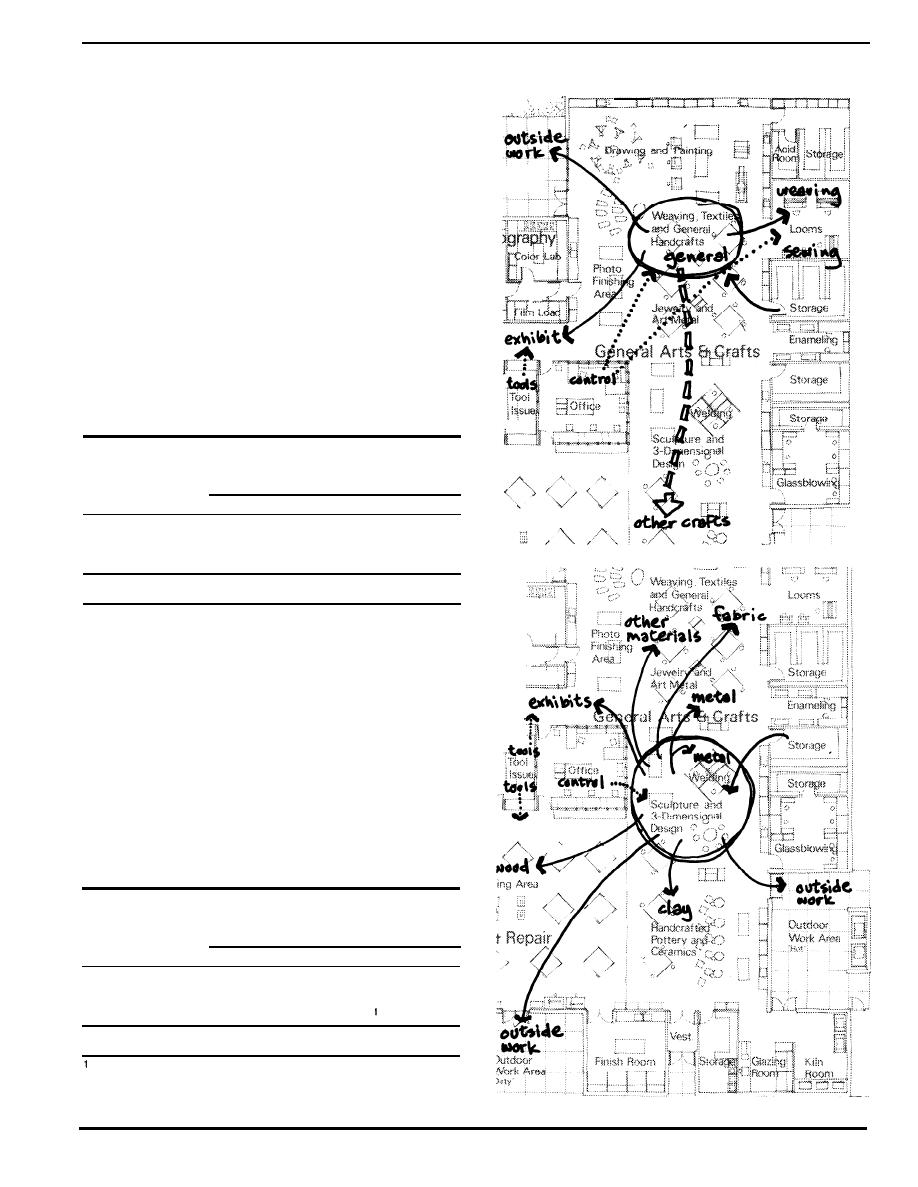
Space Criteria: A Guide to the Guides
(5) Weaving, Textiles and General Handcrafts
(a) Description. This category includes loom weaving,
tapestry work, batik, tie-dye, macrame, soft sculpture,
banners, fabric collages, needlepoint, stitchery, and sew-
ing. General handcrafts include leather craft (braiding,
sewing, tooling etc.), bookbinding, basketry, candle mak-
ing and puppetry.
(b) Space Allocation. See Table 7 - 8.
(c) Relationships. The office, library, lounge, exhibit
area, studio and classrooms should be easily accessible
from the textile and general handcrafts area.
Table 7 - 8 Space Allocation for Weaving, Textiles and
General Handcrafts
Size (Gross SF) based on Military Population
20,001 - 25,000
Sub-Space
General Work Area
1,000
Weaving Area
400
300
Storage Area
1,700
Total
(6) Sculpture and Three-Dimensional Design
(a) Description. This program requires space for clay
modeling, wood carving, stone cutting, plastic work,
metal casting and welding. The area is also the center
for model building, papier mache work, display and exhi-
bition properties, and interior decoration.
(b) Space Allocation. See Table 7 - 9.
(c) Relationships. Sculpture and three-dimensional
design should be near the office, studio/classroom/
gallery, handcrafted pottery and ceramics, jewelry and art
metal, woodwork and repair, drawing and painting and
exterior work areas. Good outdoor access is important
for large projects and materials movement.
Table 7 - 9 Space Allocation for Sculpture and Three-
Dimensional Design
Size (Gross SF) based on Military Population
Sub-Space
20,001 - 25,000
1,000
General Work Area
Storage Area
200
Exterior Work Area
200
1,400
Total
Value is half the Allocation for a similar interior space.
DG 1110-3-142 Page 7-7


 Previous Page
Previous Page
